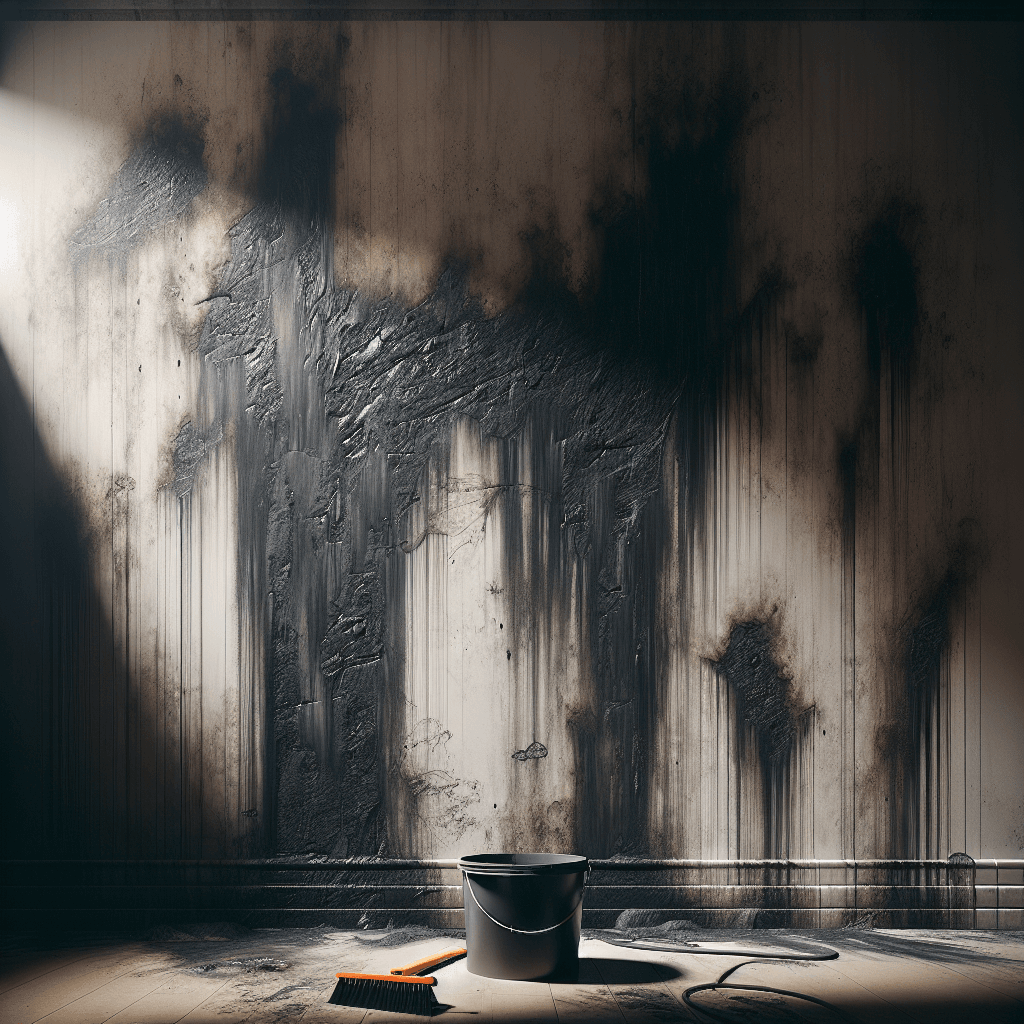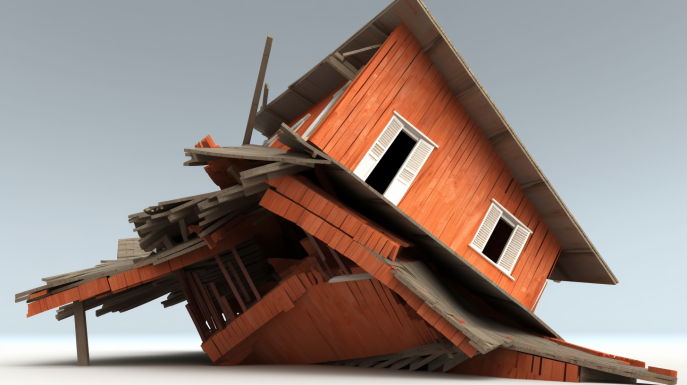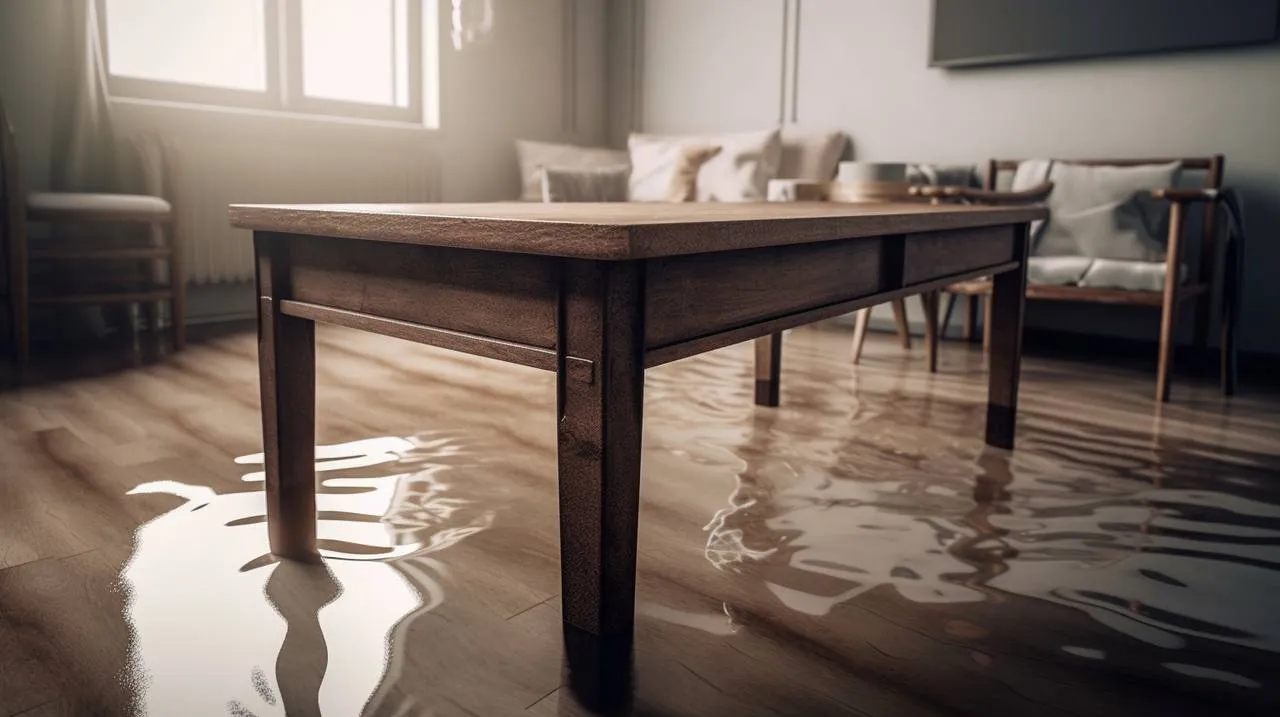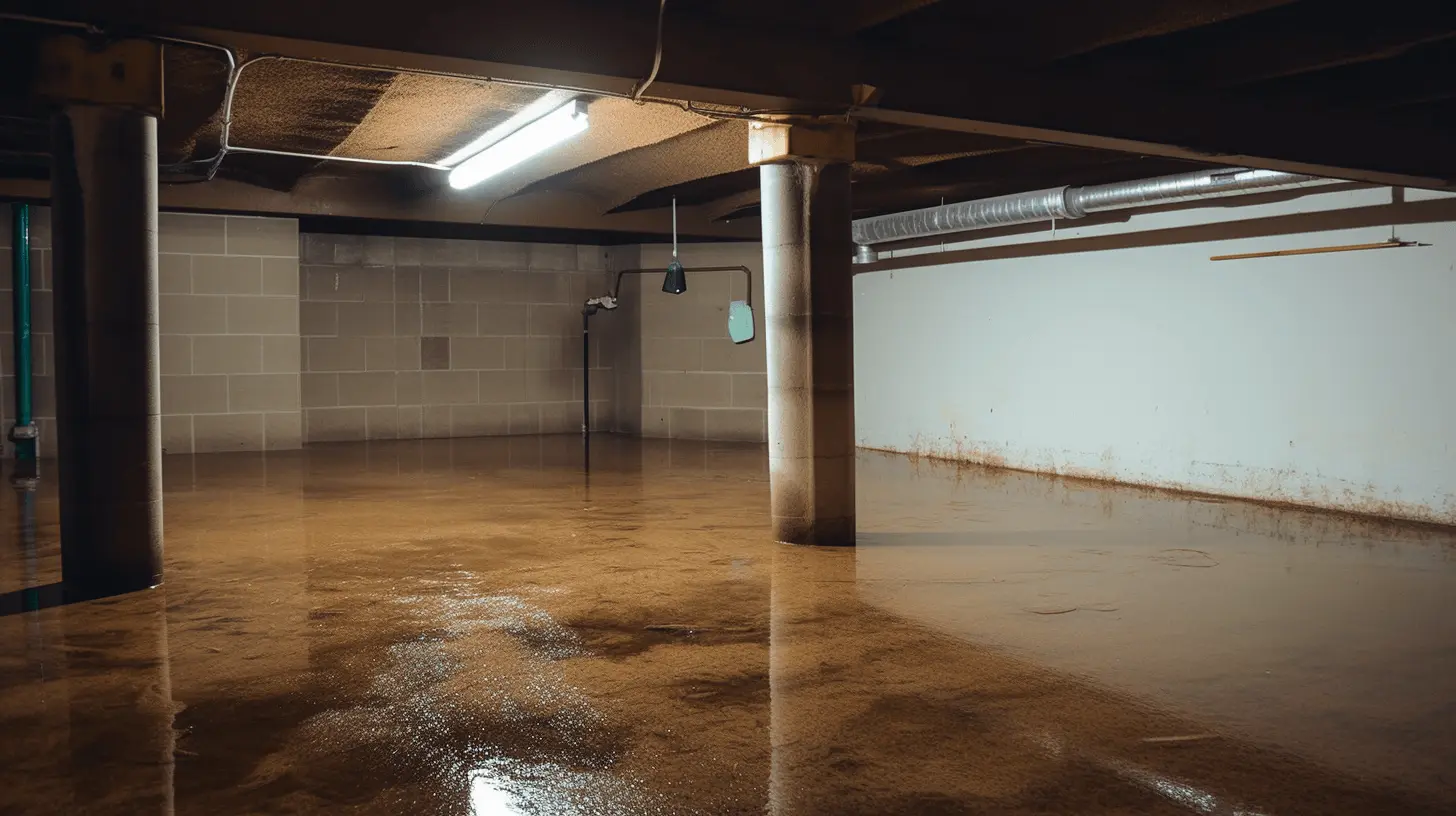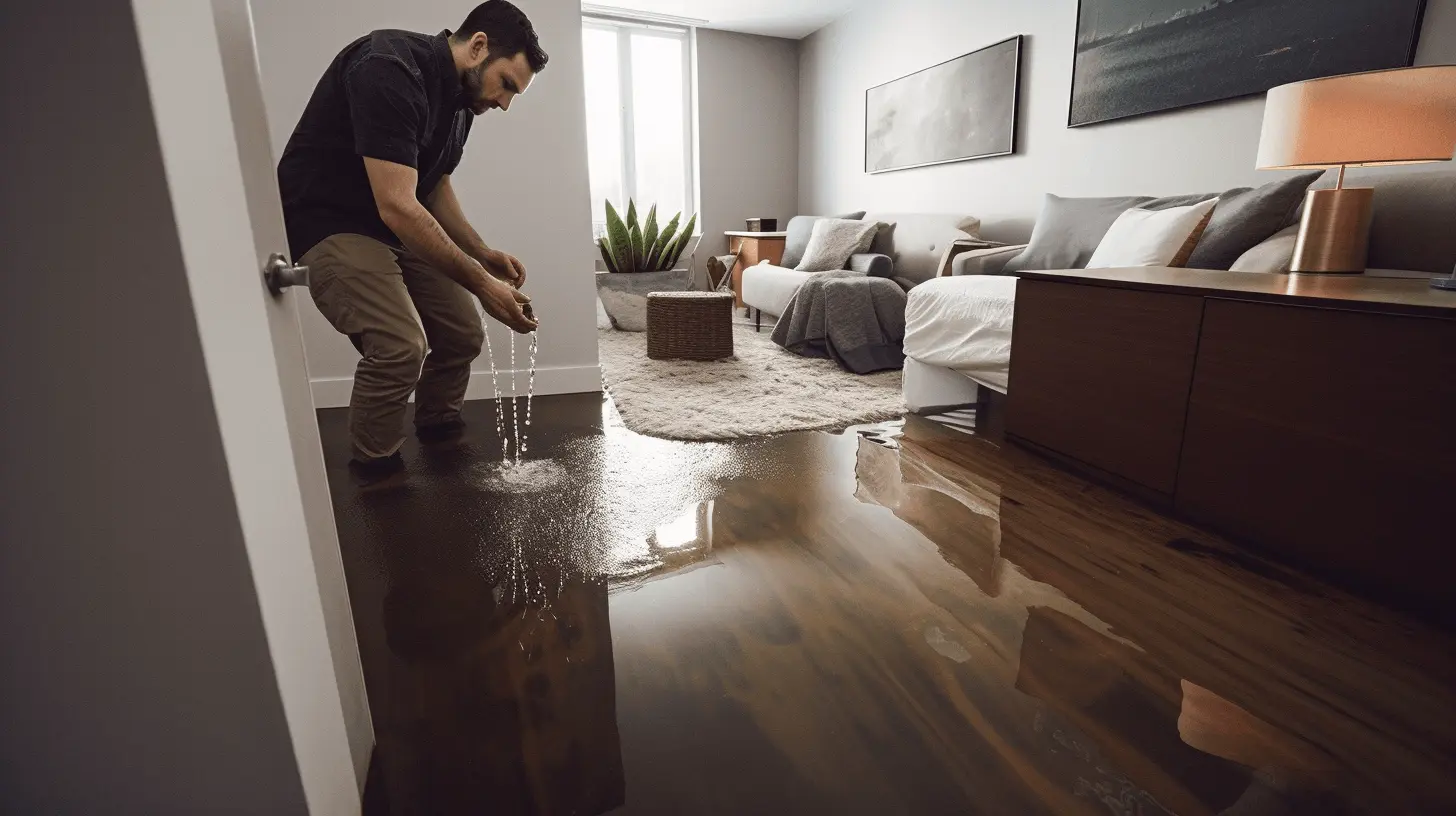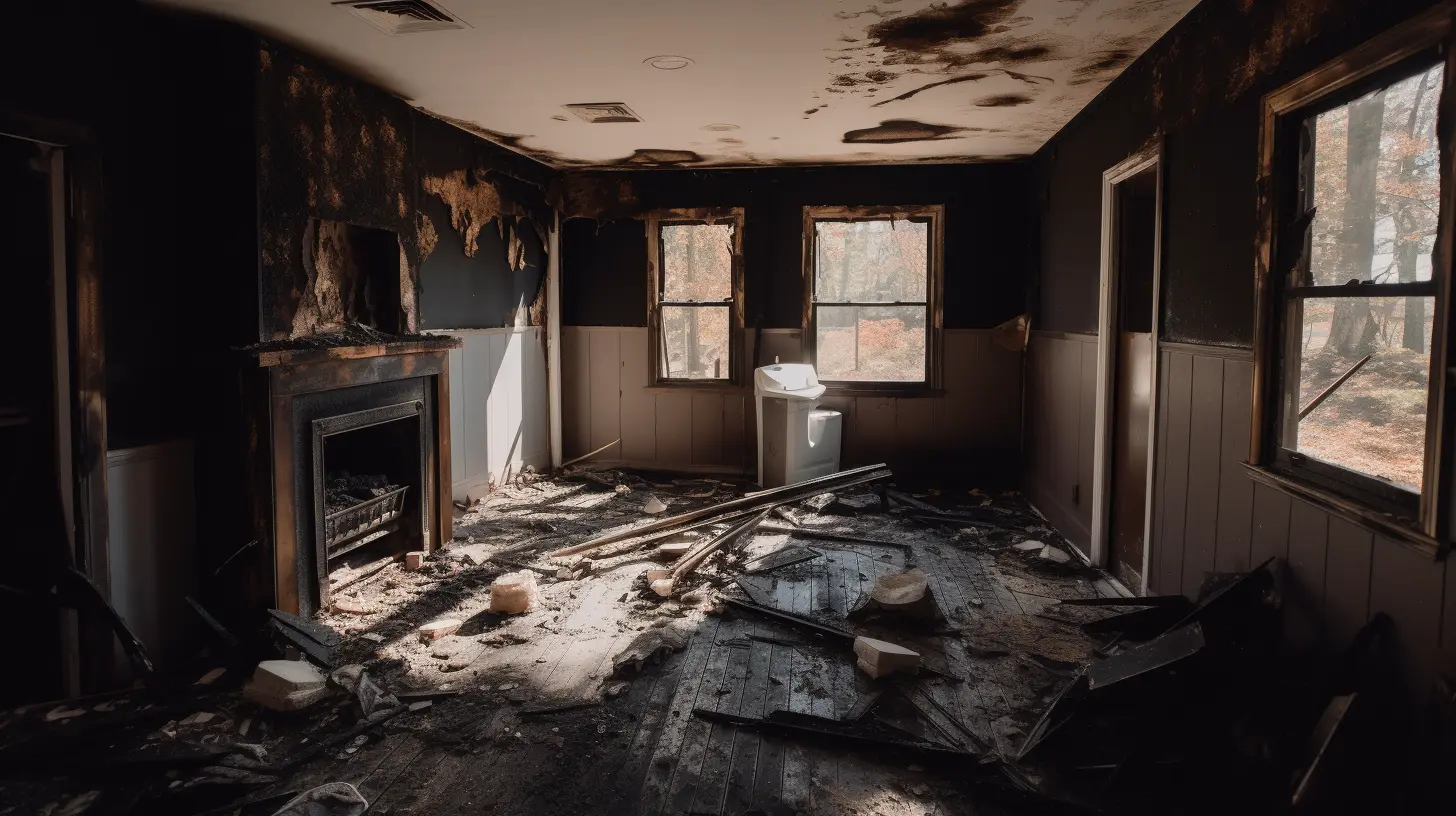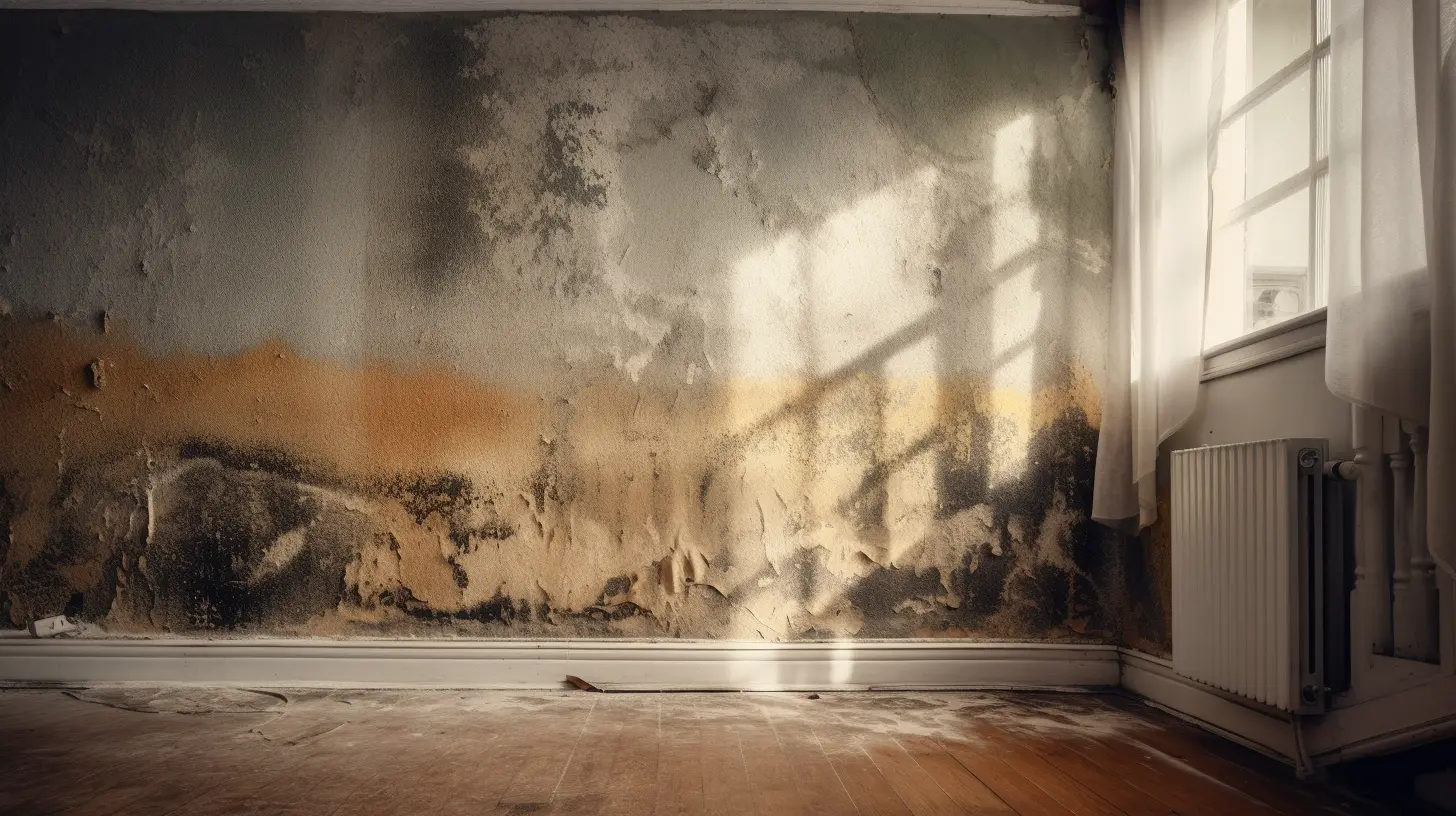Discover effective strategies to minimize the impact of wildfire smoke on health in the United States. Our comprehensive guide offers actionable tips, expert insights, and essential precautions to protect yourself and your loved ones during wildfire season. Stay informed and safeguard your well-being with our evidence-based recommendations.
Understanding Smoke Damage: How Soot Damage and Ash Damage Affect Your Home
Discover the critical impact of smoke damage on your home in our latest blog post. Learn how soot and ash damage can affect your property, from structural integrity to indoor air quality. Get expert tips on prevention and restoration to keep your home safe and healthy. Understand the signs of smoke damage and take action today!
Home structural stability threats from water damage
Water damage is often perceived as a visible problem, with obvious signs like damp walls, warped floors, and stained ceilings. However, the hidden consequences of water damage can pose a significant threat to the structural integrity of your home. Understanding these hidden threats is essential for homeowners to take proactive measures and prevent long-term damage.
1. Weakening of Building Materials
When water infiltrates the structure of your home, it can gradually weaken building materials such as wood, drywall, and insulation. Prolonged exposure to moisture can cause these materials to deteriorate, compromising their structural strength and stability. Over time, weakened materials may sag, warp, or even collapse, putting the safety of occupants at risk.
2. Mold and Mildew Growth
Excess moisture creates the perfect breeding ground for mold and mildew, which can proliferate within the walls, ceilings, and floors of your home. Mold not only poses health hazards to occupants but also contributes to structural damage by feeding on organic materials like wood and paper. Left unchecked, mold growth can compromise the integrity of building materials and lead to costly repairs.
3. Rot and Decay
Water damage can accelerate the process of rot and decay in structural components such as wooden beams, joists, and framing. As moisture seeps into these materials, it promotes fungal growth and decomposition, weakening the overall structure of the home. Rot and decay can compromise load-bearing elements, jeopardizing the stability of the entire building.
4. Foundation Instability
Water infiltration around the foundation of the home can cause soil erosion and undermine the stability of the foundation. Over time, this can lead to foundation settling, shifting, or even failure, resulting in structural damage throughout the property. Addressing water issues around the foundation is crucial for preserving the structural integrity of the home.
5. Corrosion of Metal Components
Water damage can cause corrosion and rusting of metal components within the home, such as electrical wiring, plumbing pipes, and structural supports. Corrosion weakens metal structures and compromises their ability to function properly. Electrical wiring damaged by water can pose fire hazards, while corroded plumbing pipes may leak or burst, causing further water damage.
6. Compromised Insulation
Water damage can saturate insulation materials, reducing their effectiveness and thermal resistance. Wet insulation not only fails to regulate indoor temperature and humidity levels but also promotes heat loss and energy inefficiency. Additionally, damp insulation is more susceptible to mold growth and pest infestations, further exacerbating structural issues.
7. Hidden Structural Deterioration
Unlike visible damage, such as water stains and bulging walls, hidden structural deterioration may go unnoticed until it reaches advanced stages. By the time visible signs of damage appear, the structural integrity of the home may already be compromised. Regular inspections by qualified professionals can help identify hidden water damage and prevent structural issues from escalating.
8. Prevention and Remediation Strategies
Preventing water damage and addressing issues promptly are crucial steps in safeguarding your home’s structural stability. This includes proper maintenance of plumbing and drainage systems, prompt repair of leaks and water intrusion points, adequate ventilation to reduce moisture buildup, and regular inspections of vulnerable areas.
By understanding the hidden threats posed by water damage and implementing proactive measures to mitigate risks, homeowners can protect their investment and ensure the long-term structural integrity of their homes. Consulting with experienced professionals for water damage restoration and structural repairs is essential for addressing hidden issues and restoring the safety and stability of the property.
Business water damage: essential steps for protection
Water damage emergencies can strike any commercial establishment, leading to significant disruptions and financial losses. Here are the essential steps businesses should take to protect themselves:
1. Risk Assessment and Prevention Strategies
Conduct a thorough risk assessment of your property to identify potential vulnerabilities. Implement preventive measures such as proper drainage systems, regular inspections, and maintenance of plumbing fixtures.
2. Emergency Response Plan
Develop a comprehensive emergency response plan outlining procedures for handling water damage incidents. Assign responsibilities to employees, establish communication protocols, and ensure access to essential resources like water pumps and emergency contacts.
3. Swift Action
In the event of water intrusion, act swiftly to minimize damage. Shut off the main water supply, remove excess water using pumps or wet vacuums, and begin drying efforts immediately to prevent mold growth and structural damage.
4. Documentation and Assessment
Document the extent of the damage through photographs, videos, and detailed notes. Conduct a thorough assessment of affected areas to determine the severity of the damage and prioritize restoration efforts accordingly.
5. Professional Assistance
Seek assistance from certified water damage restoration professionals who have the expertise and equipment to handle commercial water damage emergencies effectively. They can provide comprehensive services, including water extraction, drying, dehumidification, and mold remediation.
6. Structural Drying and Restoration
Ensure proper structural drying to prevent long-term issues such as rotting wood, rusting metal, and weakened building materials. Work with restoration experts to repair and restore damaged structures, including walls, floors, ceilings, and electrical systems.
7. Inspection and Quality Assurance
Conduct thorough inspections after the restoration process to verify that the affected areas are completely dry and free of mold. Implement quality assurance measures to guarantee the safety and integrity of the restored property.
8. Preventive Maintenance
Implement preventive maintenance measures to reduce the risk of future water damage incidents. Regularly inspect plumbing systems, roofs, and building envelopes, address any issues promptly, and educate employees on water damage prevention best practices.
9. Insurance Coverage Review
Review your insurance policies to ensure adequate coverage for water damage and related risks. Understand the scope of your coverage, including exclusions and limitations, and consider additional coverage options if necessary.
10. Employee Training and Awareness
Provide comprehensive training to employees on recognizing and responding to water damage emergencies. Promote awareness of potential hazards, emergency procedures, and the importance of early intervention to mitigate damage.
By taking proactive measures and partnering with trusted professionals, businesses can effectively protect themselves against the devastating impacts of commercial water damage emergencies. Investing in preparedness and swift action can safeguard your business’s reputation, assets, and continuity of operations.
Water-Damaged Wood Tables: Expert Restoration Tips
Wood tables may bring beauty and warmth to any room but are prone to water damage. Water damage may wreck wood furniture, including your favorite table. The restoration method is comparable to tiny coffee tables and huge dining tables. Using a systematic approach, you can rescue and restore water damaged wood furniture.
Water damage, particularly on veneered furniture, can cause the veneer to bubble up, leaving a visible bump on the surface. This occurs when the adhesive that holds the veneer to the base material loses its grip due to dampness.
Pro tip: To protect wooden furniture from water damage, avoid placing wet items immediately on its surface. If you spill something, clean it up immediately.
Property Damage from Water
Water damage in a home may be a nightmare, compromising not only the wood furnishings but also the structural stability of the building. Responding quickly to avoid further issues is critical when dealing with water damage. Wood table is not the most critical thing to start with.
Start by determining the cause of the water damage. It might be a burst pipe, a leaking roof, or a broken appliance. Once the source has been determined, the water flow will quickly stop, and the issue will be resolved.
Next, determine the degree of water damage to your house. Inspect the afflicted areas for evidence of moisture, such as damp walls, peeling paint, or a musty odour. Consider hiring a professional water restoration firm to address the issue if there is substantial damage.
How to Restore Water Damaged Wood Table
A systematic technique is required for restoration from water damage to prevent additional damage. Here are tips to help you through the process:
Remove the table from the affected area. Begin by carefully removing the table from the water-damaged area. This will minimize extra moisture exposure and allow you to work more efficiently on the restoration procedure.
Water damage cleanup is an integral part of the repair process. After the water has been removed and the damaged area has been fully dried, it is time to clean and disinfect it. This step is critical to preventing mold and mildew growth and maintaining a safe and healthy atmosphere. Begin by washing the surfaces with a solution of water and mild soap. Bleach and other strong chemicals should be avoided since they might cause further harm to the wood and pose health hazards. Gently scrub any apparent stains or discoloration, being sure to reach all crevices and corners. Following a thorough drying, rinse the surfaces with clean water.
After cleaning:
- Sterilize the afflicted area to remove any remaining bacteria or odors.
- Use a water and vinegar solution or a commercial disinfectant formulated exclusively for wood furniture.
- Apply the solution to the surfaces and let it sit for a few minutes before wiping clean.
- During this procedure, ensure adequate ventilation to allow the room to air out and properly dry.
- Check the furnishings for any leftover evidence of water damage or mold growth. If required, continue cleaning and sanitizing until the furniture returns to its pre-damaged state.
Conclusion
Restoring a water-damaged wooden table requires patience, attention to detail, and the proper techniques. You can bring your table back to life by assessing the amount of the damage, determining the root cause, and following a systematic water damage cleanup process. You can enjoy your restored wood table for many years with careful care and prompt restoration. Whether it’s a family treasure or a beloved piece of furniture, your table will always be the focal point of gatherings and a sign of timeless elegance. Use these restoration techniques to protect your wood furniture from water damage. Visit our website for more information about furniture repair and maintenance.
Common Causes of Basement Moisture and 5 Solutions
Dampness in the basement is a common problem that affects many homeowners. It is possible to find water in the basement after rain, and if that is constant, it can cause major damage to the structure of the house and also create an environment conducive to mold and mildew growth.
In this article, we will explore the common causes of basement dampness and share 5 effective solutions to solve this problem once and for all.
Common Causes of Basement Moisture
- Water infiltration through cracks in walls or floors: Cracks should be sealed with waterproofing materials to prevent water seepage into the basement.
- Condensation: Condensation occurs when moisture in the air condenses on cold surfaces in the basement. To solve this problem, it is essential to improve ventilation and air circulation in the basement and properly insulate the walls and floors.
- Foundation waterproofing problems: water can leak into the basement if the foundation waterproofing system is not working properly. In this case, the waterproofing system needs to be repaired or replaced.
- Poor rainwater drainage: If rainwater is not properly diverted away from the basement, water can seep into the basement and find the basement walls and floor wet. Gutters and drains should be installed to direct water away from the basement area.
- Plumbing problems: Leaking pipes or plumbing connections can be a common cause of dampness in the basement. Any water leaks should be repaired immediately to prevent moisture buildup in the basement walls.
5 solutions to prevent basement dampness
- Waterproof the walls and floor: Applying waterproofing to the basement walls and floor can help prevent moisture from entering from the outside. Apply a waterproofing coating on the wall to prevent water seepage. There are different products on the market such as waterproofing paints and bituminous membranes.
- Improve ventilation and drainage: Installing proper ventilation in the basement can help reduce moisture in the basement walls and prevent it from accumulating in the environment. Improve the drainage system around the house to move rainwater away from the structure.
- Use dehumidifiers: Placing dehumidifiers in the basement can help control humidity levels and prevent mold and mildew from forming.
- Repair leaks: It is recommended to regularly inspect the walls and foundation for cracks and seal them with appropriate products. Identifying and repairing any water leaks in the basement walls or foundation is critical to prevent dampness.
- Keep the area clean and tidy: Avoiding clutter in the basement and keeping it clean and tidy can help prevent moisture buildup and mold growth.
If the moisture problem persists, it is advisable to consult a basement waterproofing professional for an evaluation and more specialized solutions.
FastFix is a company that specializes in water damage restoration, including basement moisture removal. Our team of experts will use the latest technologies and techniques to effectively and professionally dry out and restore your basement.
Don’t let moisture affect the structure of your home or cause health problems for your family. Trust FastFix to restore your basement moisture and any type of water damage efficiently and reliably. Contact us today through our website at https://fastfixla.com/water-damage-restoration/.
How To Clean Up Water Damage Off Your Property. 5 Tips
(5 Tips on How to Clean Up Water Damage to a Property)
Water damage to a property can be devastating and wreak havoc on your structure and belongings. It is critical to act quickly to minimize damage and avoid additional problems such as mold and mildew.
In this article, we will offer five tips on cleaning up water damage to a property and recommend which water removal services you need. From initial cleanup to complete restoration, these tips will help you recover your home or business after a water disaster.
5 Tips on How to Clean Up Water Damage to a Property
When it comes to cleaning up water damage to a property, it’s essential to act promptly to avoid bigger problems down the road. Here are five key tips to help you in this process:
Act quickly to stop the water source
The first thing you should do when you discover water damage to your property is to stop the water source. Whether the cause is a broken pipe, a roof leak, or flooding, you should address the problem as soon as possible to prevent further water damage. Once you have stopped the water source, you can begin cleaning up the damage.
Clean visible water immediately
Once you have stopped the water source, it is important to clean up visible water immediately. Use towels, rags, and vacuum equipment to remove the water from affected floors and surfaces. The sooner you remove the water, the less risk of permanent damage to your property.
Dry and ventilate the affected area
After cleaning up visible water, you should dry and ventilate the affected area to prevent mold and mildew growth. Open the windows and use fans and dehumidifiers to speed up drying. If necessary, remove furniture and other affected objects to allow air to circulate freely.
Disinfect and deodorize surfaces
Once the affected area is dry, you must disinfect it, so prepare a disinfectant solution by mixing water and bleach in a 1:10 ratio (one part bleach to 10 parts water). Be sure to use gloves and adequate ventilation when handling the bleach. Apply the solution with a clean cloth or sponge and leave for 10 minutes.
Then rinse the surface with clean water to remove any residual disinfectant solution. To deodorize the surface, sprinkle baking soda and let it sit for a few hours before vacuuming.
Inspection and Repairs
Once the cleanup is complete, it is crucial to perform a detailed inspection to identify any structural damage or problems in systems such as plumbing, electrical, or air conditioning and perform any necessary water damage restoration as soon as possible to avoid damaging the property to its original condition.
To hire the services of FastFix, as we offer water removal services on your property, you can contact us through our website https://fastfixla.com/water-damage-restoration/ or phone number.
We have trained professionals and specialized equipment to do water damage restoration on your property. Do not hesitate to contact us for more information about their services and prices. Your property will be in good hands with FastFix!
6 Vital Things to Know Before Fire Damage Cleanup
Cleaning up fire damage can be a daunting and challenging task. It is imperative to consider several things before beginning the cleanup process to ensure that it is done safely and effectively. In this article, we will discuss six vital things you should know before cleaning up fire damage.
Safety
Before you begin cleaning up fire damage, it is essential to make sure that the area is safe to work in. It includes extinguishing any remaining fires, checking the stability of the structure, proper ventilation to eliminate smoke and toxic fumes, and wearing personal protective equipment such as masks and gloves.
Damage Assessment
Before beginning cleanup, it is critical to assess the extent of the damage caused by the fire. It includes determining the extent of the affected areas, identifying damaged materials, and assessing health and safety risks. It is crucial to keep in mind that fire damage can include not only the fire itself but also the smoke, soot, and water used to extinguish the fire.
Proper Ventilation
Proper ventilation is essential when cleaning up fire damage. Smoke and soot may contain toxic substances that can be harmful to health if inhaled in excessive amounts. Be sure to ventilate the area properly by opening windows and using fans to remove gases and airborne particles.
Proper equipment and cleaning products
It is essential to use the proper equipment and cleaning products when cleaning up fire damage. It may include special vacuums to remove soot, disinfectants to kill bacteria and fungus that can grow in areas of fire damage, and disinfectants to kill bacteria and fungus that can grow in areas of fire damage.
Property Protection
During the fire damage cleanup process, it is imperative to protect property from further damage. It may include covering furniture and objects with tarps or plastic sheeting, avoiding direct contact with sensitive surfaces, and maintaining adequate ventilation to prevent the spread of odors and smoke.
Professional advice
In cases of severe or complicated fire damage, it is advisable to seek the advice of professionals who specialize in fire damage cleanup. These experts have the experience and equipment necessary to safely and effectively handle the cleanup and restoration of the affected property.
In summary, cleaning up fire damage can be a complex process that requires time, effort, and patience. It is essential to have the right equipment, follow safety protocols, and be prepared to deal with challenges that may arise during cleanup. If you feel that the task is too overwhelming, don’t hesitate to seek the help of professionals who specialize in fire damage cleanup and restoration.
In this case, at FastFix we can help you. We have the team of professionals and materials necessary to help you clean up the fire damage, and you don’t have to worry about anything. For more information go to our website fill out the form, and contact us.
Mold Allergies: Symptoms, Prevention, and Treatment – 4 Important Factors
Mold is a type of fungus commonly found in damp, dark environments. While some people may not be sensitive to mold, for others it can trigger severe allergic reactions. In this article, we will explore the symptoms of mold allergies and the importance of prevention and proper treatment.
4 factors to consider if you suspect you have a mold allergy
Mold often grows in damp, poorly ventilated areas, such as bathrooms, kitchens, basements, and outdoor spaces. If you have symptoms of mold allergies, it is essential to identify and eliminate any mold in your home to reduce exposure.
Mold Prevention
Prevention is key to avoiding mold allergy symptoms and associated health problems. Some steps you can take to prevent mold growth in your home include:
- Keeping humidity levels under control.
- Properly ventilate rooms.
- Repair any water leaks.
- Regularly clean mold-prone areas.
- Using dehumidifiers if necessary.
In addition, it is essential to regularly inspect your home for signs of mold and act quickly to eliminate it.
Mold Allergy Symptoms
Mold allergies can manifest themselves in many ways, from mild symptoms to more severe reactions. Some of the most common mold allergy symptoms include:
- Sneezing.
- Itchy eyes.
- Nasal congestion.
- Coughing.
- Difficulty breathing
- Skin irritation
These symptoms may be worse in environments where there is a higher concentration of mold, such as basements, bathrooms, or leaky areas.
Mold Treatment
If you are already experiencing mold allergy symptoms, it is crucial to seek proper treatment to alleviate your discomfort and prevent complications. Some treatment options include:
- Antihistamines to control allergy symptoms.
- Decongestants to relieve nasal congestion.
- Corticosteroids to reduce inflammation.
- Immunotherapy helps your body develop tolerance to mold.
Consult a professional
If you experience symptoms of mold allergies, it is crucial to consult a physician or allergist for an accurate diagnosis and appropriate treatment recommendations. The healthcare professional will be able to perform allergy tests to determine if mold is triggering your symptoms and provide you with the appropriate treatment to control your allergies.
In summary, mold allergies can be an annoying and potentially serious problem for some people. But, with proper identification, prevention, and treatment, it is possible to control symptoms and improve quality of life. If you suspect you may have mold allergies, don’t hesitate to consult a healthcare professional for help.
Now, at Fastfix, we are experts in mold damage restoration. We have the training and certifications to do so. It often requires equipment and materials that you don’t have access to to stay safe. Log on to our website and contact us. Let the professionals assess the situation for you. Our goal is to keep your family safe.
Discovering Hidden Mold in Your Home: 3 Essential Steps
Mold is a common problem in many homes. It can be very dangerous if not properly addressed. Discovering hidden mold in your home can be alarming, but it’s essential to take steps to effectively remove it and avoid future health problems. In this article, we will explore 3 essential steps to discover and clean up mold in your home.
Health problems that mold can cause
Mold can cause several respiratory illnesses and allergies in people. Some of those illnesses are:
- Asthma: Mold can trigger asthma attacks in susceptible people.
- Allergic rhinitis: Mold can cause sneezing, runny nose, itchy eyes, and nasal congestion.
- Sinusitis: Mold exposure can cause inflammation of the sinuses.
- Chronic bronchitis: Inhalation of mold spores can cause chronic bronchitis in people with compromised respiratory systems.
- Lung infections: In severe cases, mold exposure can lead to lung infections, such as aspergillosis.
It is essential to keep spaces clean and dry to prevent mold growth and reduce the risk of associated illnesses. If mold is suspected in the home, it is recommended that professionals are contacted for proper mold removal.
Key steps to discover hidden mold in your home
- Inspect Mold-Prone Areas
The first step to discovering hidden mold in your home is to inspect areas prone to mold growth. These areas include bathrooms, kitchens, basements, and anywhere there is moisture or standing water.
Look for visible mold stains, smell for any musty odors, and be on the lookout for any moisture or water seepage problems in your home. Use a flashlight to illuminate dark, hard-to-reach areas where mold may be growing, such as behind furniture, closets, or poorly ventilated areas.
- Test for mold
Mold often gives off a distinctive and unpleasant odor. If you detect a musty or moldy odor in your home, there may be hidden mold somewhere.
If you suspect hidden mold in your home, it is important to test for mold to confirm its presence. You can purchase mold testing kits at your local hardware store or hire a professional to test your home for mold. These tests can help determine the extent of the problem and guide the cleanup process.
- Mold Removal
Once you have confirmed the presence of mold in your home, it is crucial to effectively remove it. Depending on the extent of the problem, you may need to hire a professional to perform mold cleanup. However, if the problem is mild, you can attempt to clean the mold yourself with water and baking soda-based cleaning products.
Mold usually appears as green, black, gray, or white spots on walls, ceilings, furniture, and other objects. Pay attention to any suspicious stains that may indicate the presence of mold.
So, if your apartment has recently been flooded, it’s best to call in professionals to inspect your home and help you eliminate the mold or decrease the likelihood of it appearing.
At fastfixla we have the team of experts needed to deal with any mold problem you may have, just log on to our website and use the contact form below to provide details about the service you want.


